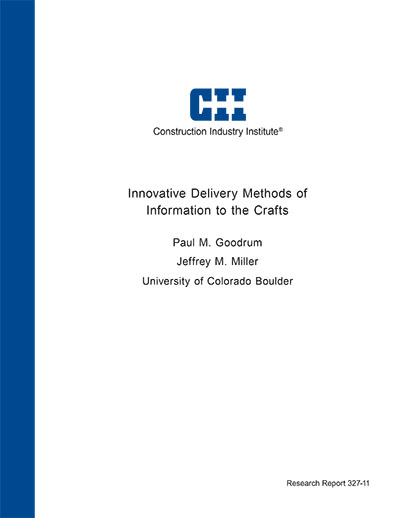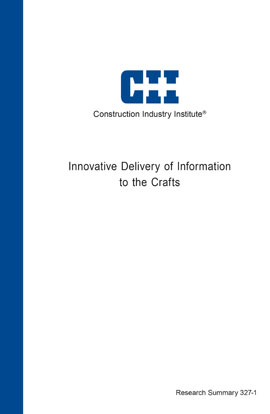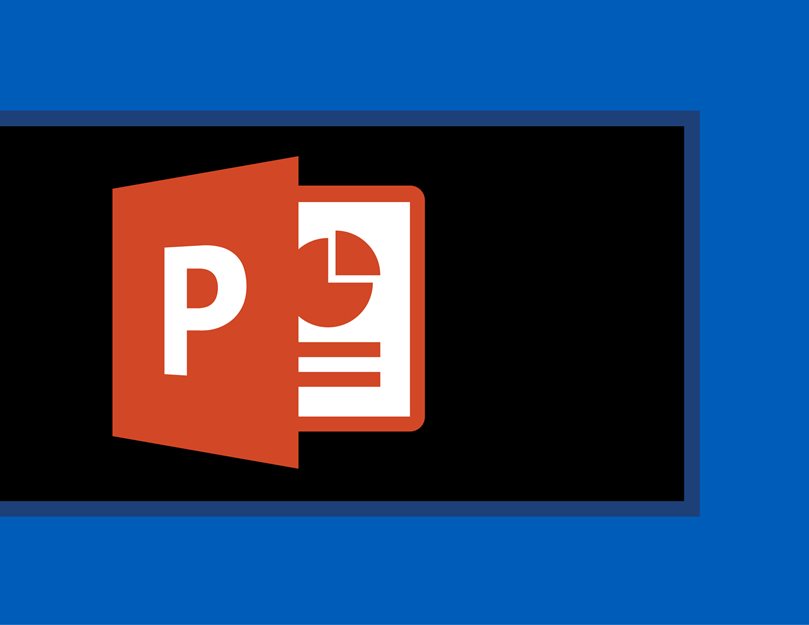
Innovative Delivery of Information to the Crafts
Research Team 327 (RT-327) is unique. Traditional CII research focuses on the identification of Industry accepted Best Practices – work processes that have been proven to be of value. As such, most CII research teams are looking back over time to see what is working or has worked for most of the members. The average CII research team requires approximately two years to deliver a product. Since the product is a Best Practice, it has been in place for at least three years. RT-327 is a spinoff of the CII Breakthrough Strategy Committee (BTSC). The BTSC has observed that our industry is one of the slowest to adopt new ways and new technology. Full implementation can take anywhere from ten to thirty years. The BTSC has recently revamped our mission to research and identify potential practices and technology that are available now (shovel ready) and being used by some to add value to the capital project delivery system. We are experimenting with an accelerated research model that will reduce the research time to market to one year or less.
In this case, RT-327 observed that even after our engineering firms have invested hundreds of millions of dollars on new 3D design technology. It is used to provide the traditional piping isometrics as the definitive document delivered to the craft for construction. RT-327 zeroed in on the piping craft since they constitute the largest percentage of direct labor and a high percentage of the material on most industrial projects.
There is perception that by providing an engineering 3D model in the field, there is no need to produce the traditional plans and sections. Our workshops indicated that this is a major misconception. The craft is left with a model that is located approximately a quarter mile from the work site, that is NOT construction friendly and a stack of piping isometrics to plan and execute the project.
Our mission was to explore non-traditional ways to provide the craft with information. We conducted six workshops with the craft to solicit their ideas on what would help them plan and execute their work. We looked at what they were given currently, asked how it was working, provided alternative deliverables being used by other industries, and investigated alternative delivery methods, such as 3D printed models (also known as 3D physical models), field kiosks, hand held devices, and high technology glasses or hard hats. The results indicated that the Two-Sided Isometric (traditional Isometric on one side with a model view on the second) was the overall best improvement we could provide for the piping craft.
RT-327 focused on conducting field trials to validate the value. The final results of our field trials were astounding. Overall we could expect a 17% improvement in productivity direct work when the craft is provided with a Two-Sided Isometric. There is a corresponding improvement in quality with less rework required. The added cost to produce the Two-Sided Isometric was minimal.
There was an added benefit that no one expected. Our research indicated that craft cognitive skills varied widely, much like it does in the general population. It was more difficult for some craft to read and understand a piping Isometric drawing.


